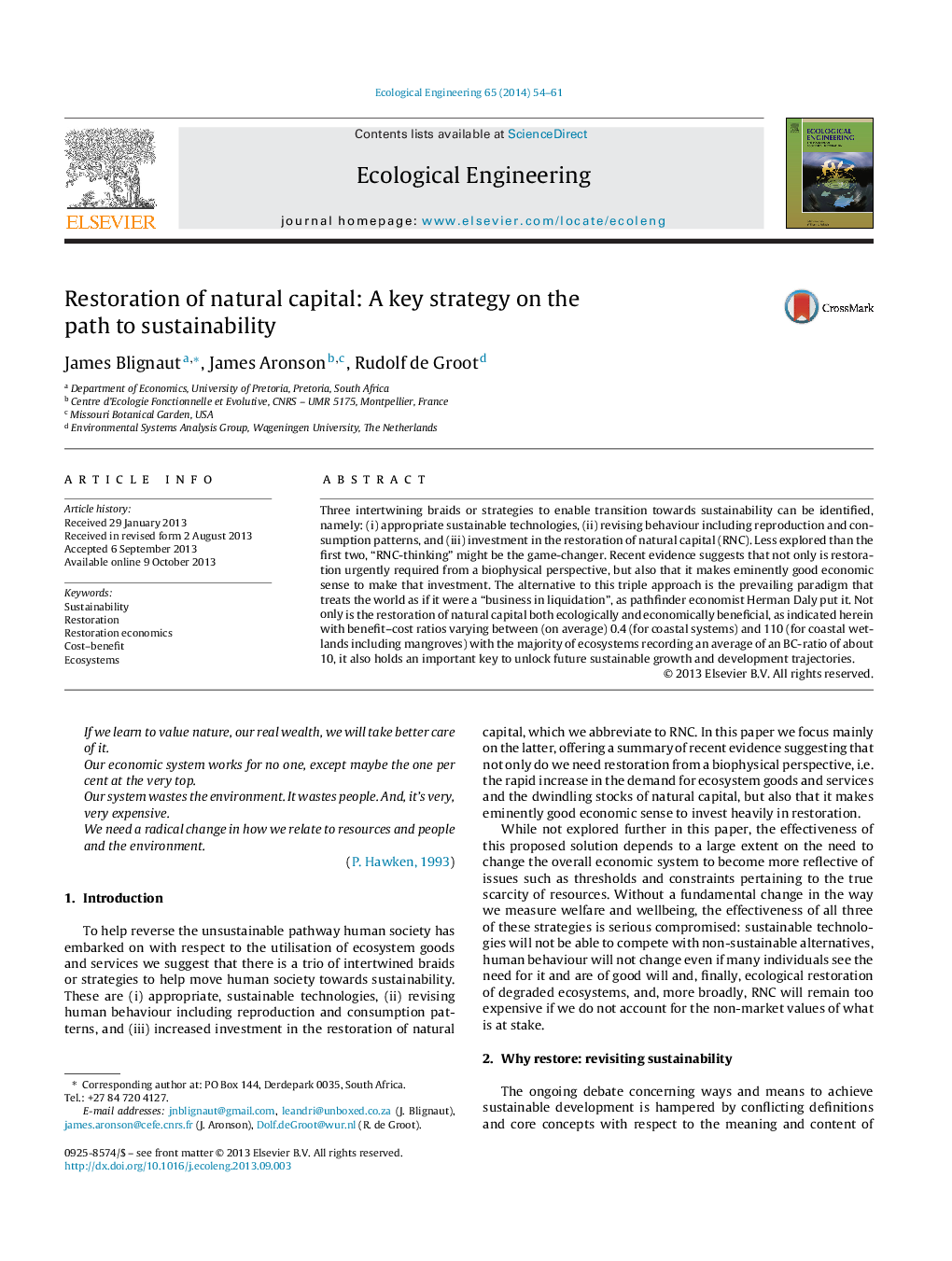| کد مقاله | کد نشریه | سال انتشار | مقاله انگلیسی | نسخه تمام متن |
|---|---|---|---|---|
| 4389445 | 1618034 | 2014 | 8 صفحه PDF | دانلود رایگان |
• Sustainability requires new technologies and behaviours which in turn depend on new economic paradigms to Restore Natural Capital.
• Restored areas provide a cost-effective safety net against both climate change and loss of ecosystem services including genetic material and waste treatment.
• Investing in restoration pays: benefit–cost ratios for the majority of restored ecosystems average 10.
Three intertwining braids or strategies to enable transition towards sustainability can be identified, namely: (i) appropriate sustainable technologies, (ii) revising behaviour including reproduction and consumption patterns, and (iii) investment in the restoration of natural capital (RNC). Less explored than the first two, “RNC-thinking” might be the game-changer. Recent evidence suggests that not only is restoration urgently required from a biophysical perspective, but also that it makes eminently good economic sense to make that investment. The alternative to this triple approach is the prevailing paradigm that treats the world as if it were a “business in liquidation”, as pathfinder economist Herman Daly put it. Not only is the restoration of natural capital both ecologically and economically beneficial, as indicated herein with benefit–cost ratios varying between (on average) 0.4 (for coastal systems) and 110 (for coastal wetlands including mangroves) with the majority of ecosystems recording an average of an BC-ratio of about 10, it also holds an important key to unlock future sustainable growth and development trajectories.
Journal: Ecological Engineering - Volume 65, April 2014, Pages 54–61
